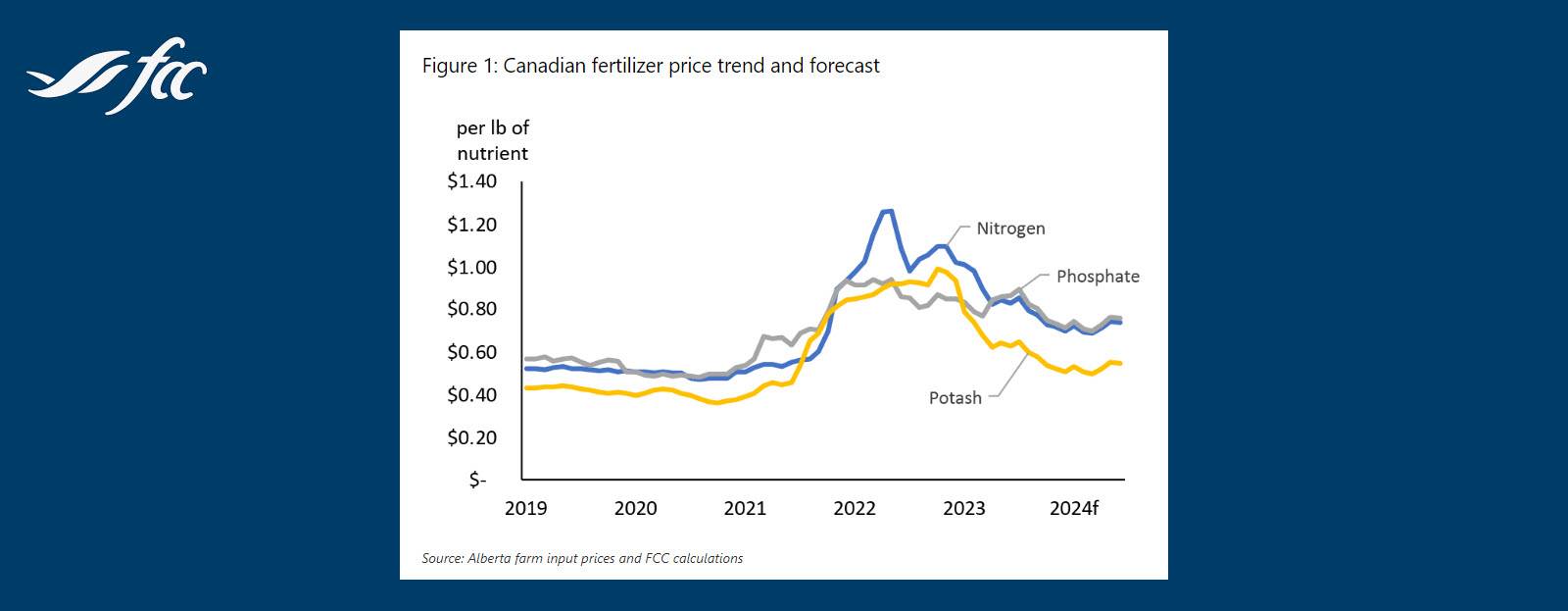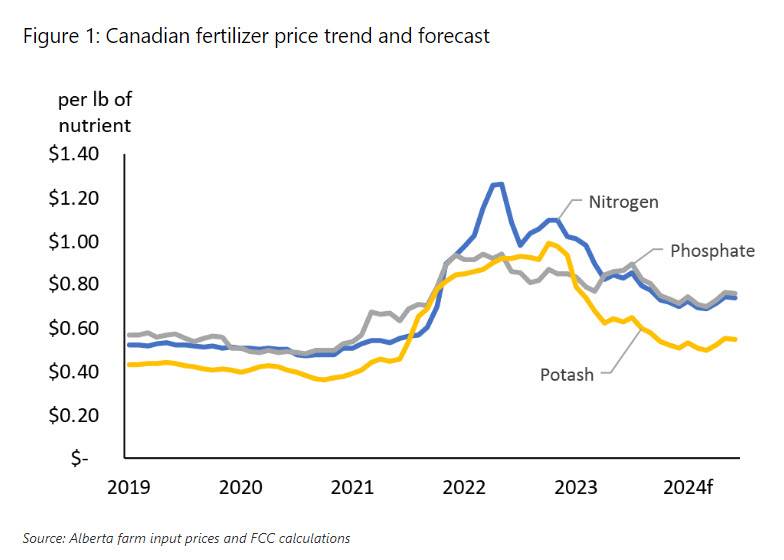
The Canadian agricultural scene is buzzing with discussions about the upcoming year, especially given the backdrop of the 2023 droughts and geopolitical concerns. FCC shared the following thoughts about Fertilizer Trends:
- Historical Highs: The 2022 spike in fertilizer prices, owing to the Russia-Ukraine war and European natural gas pricing issues, remains a talking point. The global response to these crises managed to soften the impact on prices as the year progressed.
- Predictions for 2024: Prices are anticipated to dip further in early 2024 but might see a rebound as North America’s seeding period nears. The drought in Western Canada and the US Midwest is expected to dampen volume during the fall application phase.

Fuel Projections
The global slowdown might bring relief with a projected drop of 2.8% in farm diesel prices for 2024 says FCC. However, ongoing geopolitical events and U.S. distillate levels might add pressure.
Chemical and Seed Outlook
Global production recovery is poised to moderate prices of essential agrochemicals like glyphosate and glufosinate. The crux for Canada hinges on its domestic demand and supply balances, says FCC. Seed uncertainty, especially concerning canola, hangs in the balance as eyes turn to South America’s off-season production capabilities.
Factors to Watch
El Nino and the Drought: A looming El Nino might bring warmer temperatures. This could urge Canadian producers to lean towards early maturing crop varieties.
Farm Revenue Dynamics
The first half of 2023 saw a jump of 19.8% in crop receipts. However, the drought may pull these numbers down by the year-end and early 2024.
Economic Indicators
FCC says that interest rates, especially with relation to the US, and their impact on the Canadian dollar, demand vigilance.
In conclusion, FCC says that input providers need to be on their toes as the demand for fall fertilizer and pre-season preparations kick in. The prolonged effects of El Nino will steer decisions on soil tests, spray strategies, and crop variety choices.

